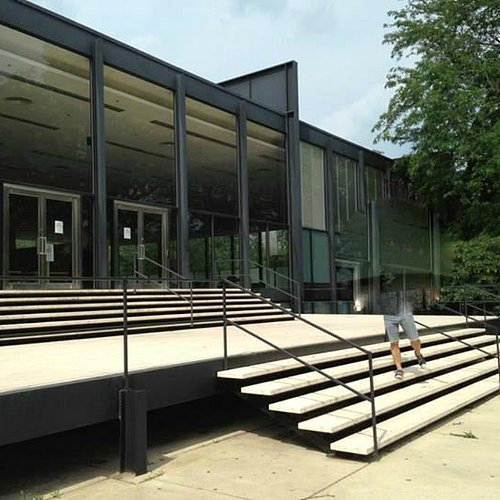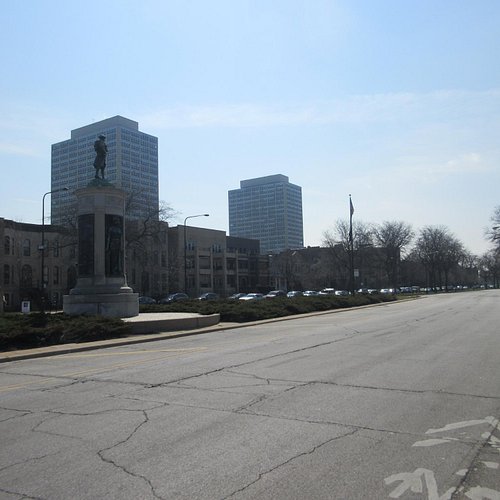Top 8 Points of Interest & Landmarks in South Side, Illinois (IL)
The windy city is a cornucopia of modern art, fine dining, cutting edge comedy, and die-hard sports fans. Snap a photo of your reflection in the silver Cloud Gate sculpture at Millennium Park before heading to Grant Park to get hit with the refreshing spray of Buckingham Fountain. There are dozens of museums and theater companies in Chicago, so a cultural experience is never hard to find. You’re sure to laugh your head off at the Second City Theater, the professional launch pad of many famous comedians.
Restaurants in Chicago
1. S.R. Crown Hall
Overall Ratings
5.0 based on 12 reviews
Reviewed By 866TaylorB - Chicago, United States
I first saw S.R. Crown Hall when covering a high school football game near the campus of the Illinois Institute of Technology in Chicago in 1975. And I first saw Farnsworth House in Plano, Illinois, when my mother was serving as a docent in 1995. So which steel and glass-constructed landmark of famed architect Ludwig Mies van der Rohe came first? Farnsworth House, a one-room country retreat on the Fox River, was completed in 1951. Crown Hall, home of the Illinois Tech's College of Architecture and widely considered one of van der Rohe's masterpieces, was completed in 1956. Located at 3360 South State Street, it is regarded as one of the most architecturally significant buildings of the 20th century Modernist movement. Steel frame, no interior columns, floor to ceiling glass, suspended roof, a single classroom on the upper level. lots of light and open space. "Almost nothing" is how van der Rohe described it. The two-level building is a pure rectangle, 220 feet by 120 feet by 18 feet tall. Crown Hall was named a Chicago Landmark in 1997 and added to the National Register of Historic Places and listed as a National Historic Landmark in 2001.
2. Victory Monument
3. Nuclear Energy Sculpture
Overall Ratings
4.5 based on 6 reviews
Reviewed By 866TaylorB - Chicago, United States
At first glance, it looks like a basketball on a pedestal. Or a tooth. Or a skull. Or a cathedral. But the man who created it said the working model looked like the top of a large mushroom or a mushroom cloud. So there it is, a bronze sculpture by Henry Moore on the campus of the University of Chicago, on South Ellis Avenue, north of 56th Street, between the Max Palevsky West Dormitory and the Mansueto Library, in the Hyde Park neighborhood, at the site of the world's first nuclear reactor, Chicago Pile-1. Created in 1964-1966, the sculpture is called Nuclear Energy and it commemorates the exact location where the Manhattan Project team devised the first human-made self-sustaining nuclear chain reaction on December 2, 1942. It was in the basement of the now demolished west stands of the old Stagg Field. It is described as 14 feet in height and eight feet in diameter and it sits atop a base that is 1 1/2 feet in height and 10 feet in diameter. It was erected for and dedicated at the celebration of the 25th anniversary of the first self-sustaining controlled nuclear reaction on the grounds by Enrico Fermi in 1942. Thus, it was unveiled at precisely 3:36 p.m. on December 2, 1967. It was designed a National Historic Landmark in 1965 and added to the National Register of Historic Places in 1966 as one of the original designated historic places. It was named a Chicago Landmark in 1971.
4. Nine Dragon Wall
5. Cosmopolitan Church Of Prayer
6. Shipwreck of the Silver Spray
Overall Ratings
5.0 based on 1 reviews
7. St. Thomas the Apostle Catholic Parish
Overall Ratings
4.5 based on 2 reviews





